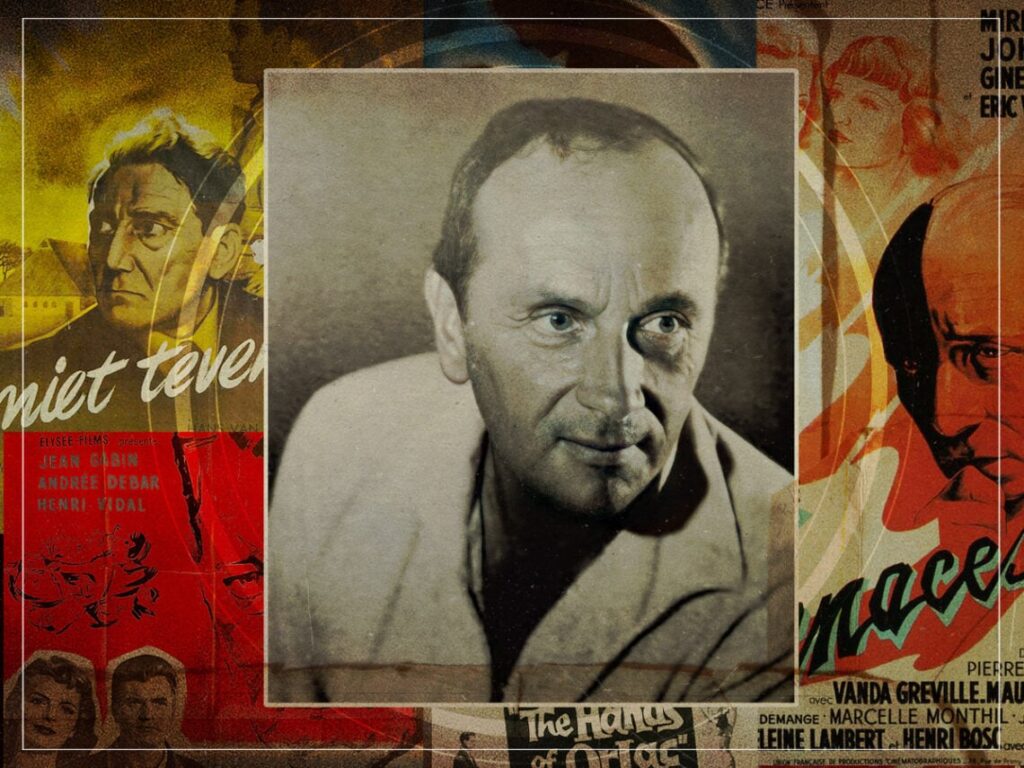Edmond T. Gréville: from cinephile to pioneering auteur
 Posted On
Posted On
(Credits: Far Out / MUBI / Original Promo)
When thinking of French film critics who went on to become respected auteurs, François Truffaut and Jean-Luc Goddard will inevitably be at the forefront of the conversation. However, it’s a list that feels incomplete without Edmond T. Gréville, even if he didn’t attain the same levels of respect or recognition as his peers.
After beginning his career in the industry as a journalist, Gréville began his secondary – and eminently more successful – career in the late 1920s by working as an assistant director. He made his feature-length debut behind the camera on 1931’s Le Train des Suicides, which starred his English actor wife Vanda in what would be far from their final professional collaboration.
An ardent cinephile, Gréville drew inspiration and influence from other filmmakers he admired and sought to emulate but always infused his work with a distinct visual style that was identifiably his. Ambitious camerawork and fast-paced editing were among his favoured tricks, but despite making over 35 films, he ended up virtually penniless at the time of his death after being cast aside and forgotten about by the very profession he’d dedicated his life to.
As the adopted son of a parents from England and France respectively, Gréville bounced between both countries to curate his body of work, and looked to both equally for aesthetic and thematic guidance. He was never a mainstream concern in the conventional sense, but those who admired his work adored it for the way he would embrace and subvert the cinema emerging from either side of the Channel and make it something his own.
1934’s provocative Remous laid the groundwork for a string of sexually charged films that dealt in what would soon become signatures. Whether it was fluid camera moves, scene transitions that intentionally went against the grain, or a fondness for using reflective surfaces to convey the emotions of his characters, it was here that Gréville arguably came into his own for the first time.
Two years later, Gypsy Melody paired him up with ‘Mexican Spitfire’ Lupe Vélez for a salacious musical comedy, Brief Ecstasy dabbled in the scandalous nature of extra-marital passions, Secret Lives furthered his explorations on duplicity through the means of an espionage thriller, and Mademoiselle Docteur placed romantic and emotional allegiances under the microscope of punishable crimes.
Never one to be constrained by the limitations of genre, though, Gréville touched on the oncoming storm of World War II in 1939’s Menaces, populated 1948’s Noose with sex workers and racketeers for a raucous adaptation of a stage play, and returned to a similar well over a decade later when 1960’s Beat Girl ventured into the strip clubs of Soho for a lascivious murder mystery.
More than a simple stylist and outsider – although that was intrinsic to his work – Gréville was adept at staging breathtaking, dreamlike sequences punctuated with bursts of action, often in the same film. For instance, Dorothée cherche l’amour features impressive underwater scenes and an expertly choreographed gunfight, with the poeticism of his writing complementing his visual daring to mark him out as a genuine auteur at a time when cinema – at least, that being crafted by those who weren’t names unto themselves – tended to find a genre that worked and pummel it into submission.
As somebody raised on a steady diet of cinema for years who then parlayed that into a job analysing and criticising it before segueing into crafting features himself, that education and evolution is prevalent across the dozens of movies he created over a period of decades that eventually gave him the status he didn’t quite manage to achieve during his most fruitful years.
[embedded content]


